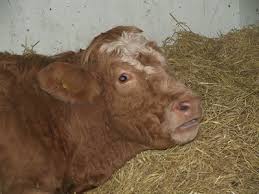Lungworm in Cattle Q & A
29 July 2022Farmers need to be aware of Lungworm at this time of year, classically cases are seen in the summer months and early autumn (July to October). As farmers aim to graze stock for longer periods to help keep feed and bedding costs down, it’s important to understand the parasite and how to control it.
What is Lungworm?
Lungworm is a parasitic infection of the bovine respiratory tract ingested from grazing contaminated pasture. Animals at greatest risk are calves in their first grazing season and yearling animals entering their second grazing season, although it is increasingly being reported in older cattle. The majority of cattle survive the infection, however the disease can be fatal.
What are the symptoms?
Frequent noticeable coughing within the herd is a tell-tale sign. Other clinical signs of Lungworm include loss of condition and weight loss, laboured breathing, tiring easily and reduced milk yield in adult cows.
What are the cost implications?
Costs of lungworm outbreaks are estimated at £50-100 per head, and can be higher if it is not caught early and calves are lost. Lungworm will not necessarily be present on every field, every year and so exposure will vary. Animals build up immunity in response to exposure to lungworm, and if this does not occur, they remain susceptible.
What are the treatment options?
While anthelmintic treatment is effective at killing lungworm, the time of year at which lungworm strikes can be variable and is difficult to predict. By the time animals are coughing, there will already be lung damage, which can result in secondary bacterial infections and long-lasting implications for the animal and the herd. A small number of animals with severe disease may never fully recover from the lung damage and remain ill thriven.
The table below shows the duration of effectiveness against lungworm of the various anthelmintics.
| Anthelmintic | Route of Administration | Duration of Activity Against Lungworm |
|---|---|---|
| Eprinomectin | Pour on | < 28 days |
| Ivermectin | Pour on | < 28 days |
| Injection | < 28 days | |
| Doramectin | Pour on | 42 days |
| Injection | 35 days | |
| Moxidectin | Pour on | 42 days |
| Injection 1% | 42 days | |
| Injection 10% | 120 days |
Depending on anthelmintic treatments given, first grazing season calves may be protected or treated before infection has a chance to build up. If the anthelmintic treatment given is considered to be protective during the first grazing season, then consider vaccination prior to the second grazing season on affected farms. This gives heifer replacements the opportunity to become immune and reduce the likelihood of them being affected as adult animals.
Prior to housing, consider treating calves grazing infected/high risk pastures with an anthelmintic around 2 weeks before housing (which may tie in with administration of pneumonia vaccine). Dosing at this time avoids the stress of housing coinciding with the animals being treated, as lung damage and clearing dead worms from the lung tissue can contribute to pneumonia risk.
How to prevent Lungworm
A vaccine is available to protect against lungworm in cattle. The vaccine contains live larvae it is important to avoid wormer use for two weeks after vaccination. Calves can be vaccinated from eight weeks of age onwards, with two doses given four weeks apart at least two weeks before animals have access to pasture.
Spring Born Calves
- Within the context of a spring-calving beef herd the recommended data sheet protocol is unworkable, as it would require March-born calves to be held off pasture until mid-June at the earliest. A more practical solution is for calves to go to grass unvaccinated and then start the primary vaccination course when they reach eight weeks of age. Calves can be vaccinated at any stage throughout the summer, as long as they receive their second dose of vaccine at least 2 weeks prior to weaning.
Yearling Animals
- Yearlings are at particular risk in their second grazing season if they have received limited exposure to lungworm in their first grazing season. Establishing exposure can be difficult, especially if animals have been purchased. The standard data sheet protocol can be used (as detailed above) with the primary course being completed at least two weeks prior to turnout.
It is recommended that vaccinated calves are exposed to pasture carrying a low level of lungworm larvae, as this will enhance the immunity provided by the vaccine. Continued immunity to lungworm from this single primary course needs to be boosted by natural exposure.
Lungworm immunity is maintained from season to season by exposure to lungworm larvae, which in most cases occurs from the grazing of normal pastures after vaccination. If animals are on clean grazing for a large part of the grazing season, then a single booster before turnout each year may be beneficial.
As always, it is important to speak to your vet about the treatment methods most appropriate for your herd.
Sarah Balfour & Fiona Crowden
Sign up to the FAS newsletter
Receive updates on news, events and publications from Scotland’s Farm Advisory Service

